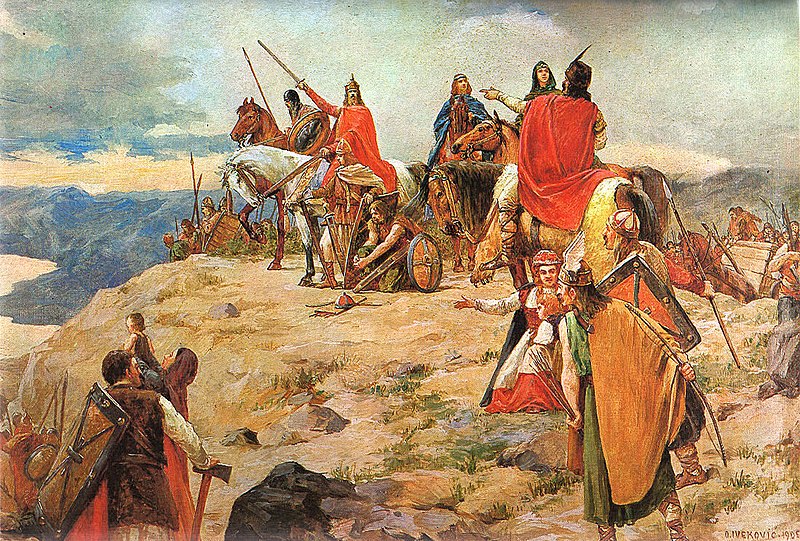The term "Germanic" originated in classical times, when groups of tribes were referred to using this term by Roman authors. For them, the term was not necessarily based upon language, but rather referred to tribal groups and alliances who were considered less civilized, and more physically hardened, than the Celtic Gauls living in the region of modern France. Tribes referred to as Germanic in that period lived generally to the north and east of the Gauls.
Classification
The distribution of the primary Germanic dialect groups in Europe in around AD 1:
North Sea Germanic, or Ingvaeonic
Weser-Rhine Germanic, or Istvaeonic
Elbe Germanic, or Irminonic
Origins
Regarding the
question of ethnic origins, evidence developed by archaeologists and linguists
suggests that a people or group of peoples sharing a common material culture
dwelt in a region defined by the Nordic Bronze Age culture between 1700 BCE and
600 BCE. The Germanic tribes then inhabited southern Scandinavia,
Schleswig-Holsteinand Hamburg, but subsequent Iron Age cultures of the same
region, likeWessenstedt (800 to 600 BCE) and Jastorf, are also in
consideration. The change ofProto-Indo-European to Proto-Germanic has been
defined by the first sound shift (orGrimm's law) and must have occurred when
mutually intelligible dialects or languages in a Sprachbund were still able to
convey such a change to the whole region. So far it has been impossible to date
this event conclusively.
The precise
interaction between these peoples is not known; however, they are tied together
and influenced by regional features and migration patterns linked to
prehistoric cultures like Hügelgräber, Urnfield, and La Tene. A deteriorating
climate in Scandinavia around 850 BCE to 760 BCE and a later and more rapid one
around 650 BCE might have triggered migrations to the coast of Eastern Germany
and further toward the Vistula. A contemporary northern expansion of Hallstatt
drew part of these peoples into the Celtic hemisphere, including nordwestblock
areas and the region of Elp culture (1800 BCE to 800 BCE).
At around this time, this culture became influenced by Hallstatt techniques for
extracting bog iron from the ore in peat bogs, ushering in the Pre-Roman Iron
Age.


No hay comentarios:
Publicar un comentario